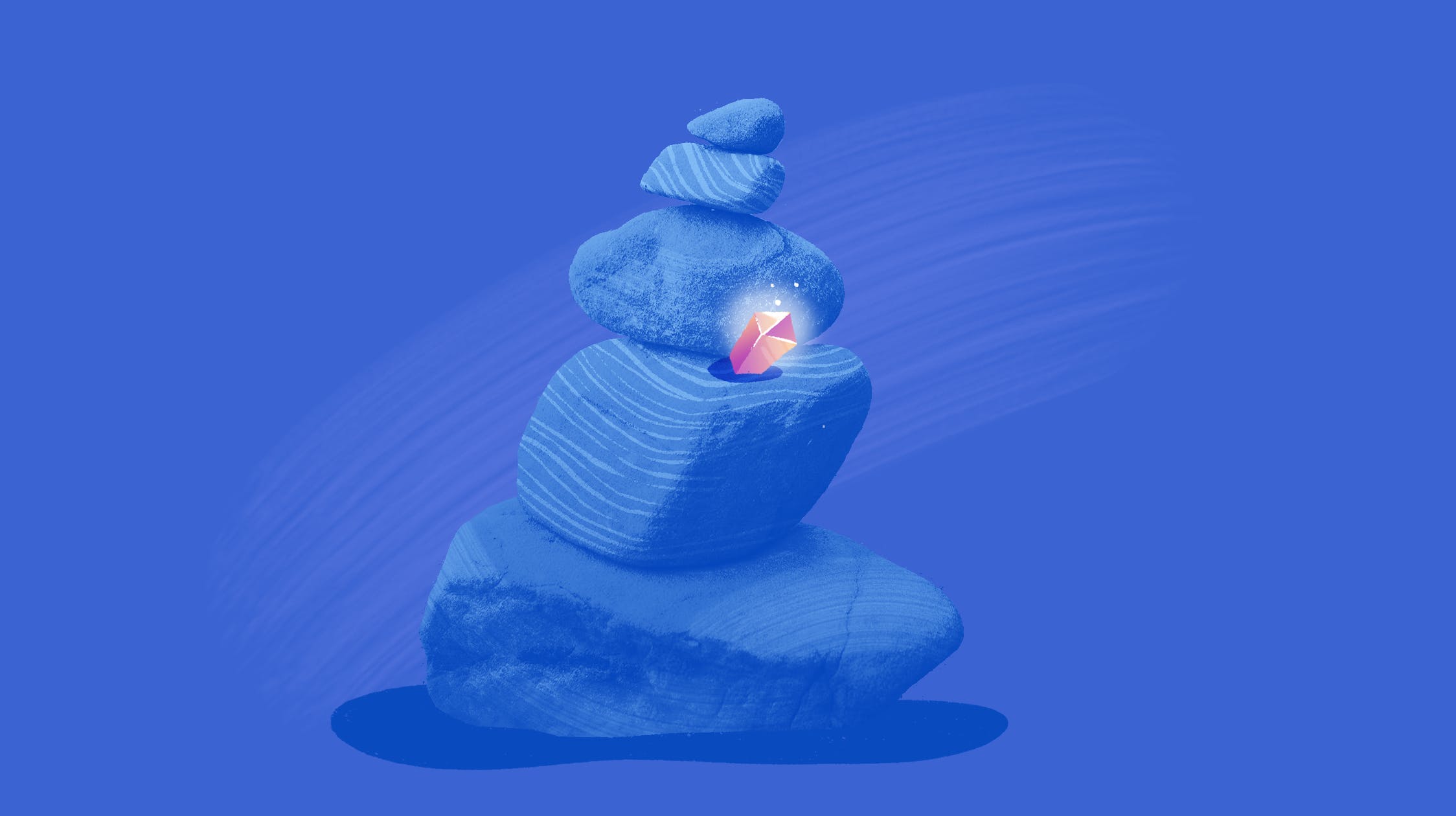How Help Scout Mitigates Unconscious Bias in Hiring


Human beings are impressive amalgams of complicated systems which allow us to function and survive. Thankfully, many of those systems run subconsciously, not requiring any effort on our part to happen.
Every day, our brains take in countless data points and make assessments and choices that shape our lives. But so much takes place below the surface, deep within our subconscious minds, that also plays a big part in shaping our behaviors.
Since we’re not always actively aware of these thoughts, we often don’t realize the negative consequences that can occur when unconscious bias seeps in. This can be particularly problematic when it comes to building a diverse team.
If it’s human nature to look for clues, patterns, and data to help us make decisions about other people, how can we recognize unconscious bias to mitigate it when hiring?
Try the customer support platform your team and customers will love
Teams using Help Scout are set up in minutes, twice as productive, and save up to 80% in annual support costs. Start a free trial to see what it can do for you.
Try for free
What is unconscious bias?
Every single human has bias. Bias is a particular tendency, feeling, or opinion, especially one that is preconceived or unreasoned. Our brains have developed the very natural habit of seeking out and categorizing data about the world and forming biases from that information.
Our biases are shaped by our lived experiences, our families, our communities, the media, you name it! And all of our biases, both conscious and subconscious, influence our perceptions and actions. We’ve depended on bias for thousands of years, often to help us make snap decisions in order to survive.
Unconscious biases, also known as implicit biases, are the underlying attitudes and stereotypes that people unconsciously attribute to another person or group of people that affect how they understand and engage with them.
A vast amount of research has demonstrated the link between bias and the perpetuation of racism, discrimination, and prejudice, so it’s critical that we understand what bias is and how it can negatively impact what we do.
Examples of unconscious bias
Confirmation bias
Humans have the tendency to make a decision or form an opinion about something, then look for information that confirms that belief while overlooking information that contradicts it. Confirmation bias suggests that we don’t perceive circumstances objectively, and we instead pick out those bits of data that make us feel good because they confirm our prejudices.
Hiring impact: This can become problematic in hiring if a hiring manager makes an early conclusion about a candidate and then only looks for data that confirms this initial thought.
Similarity bias
Have you noticed that your friend group has lots of traits and qualities similar to your own? That’s no accident — we often seek out and prefer people with whom we share things in common.
Hiring impact: When building a company, hiring people just like you can have a negative impact on decision-making, innovation, and your culture.
Conformity bias
You might recall being a teenager and receiving many lectures about resisting peer pressure. Groups have power, especially when that group is made up of people you care about, such as in the workplace.
Hiring impact: We tend to go along with what a group thinks because it feels uncomfortable to disagree and challenge, but a great hiring process requires just that.
How to reduce unconscious bias in the hiring process
Every human is chock-full of conscious and subconscious bias that’s impacting how and why they make choices, so it’s a tall order to eradicate all bias from our hiring processes. We want to share with you all of the steps we take at Help Scout to reduce it as much as we can.
1. Diversify your hiring team
Data suggests that diverse groups make better decisions, so try your best to diversify your hiring team so more backgrounds and voices are represented. It will also be a better experience for candidates if they are able to see a variety of identities represented on a team.
2. Develop interview training
Nobody is born an excellent interviewer, just like no one becomes an amazing marketer or engineer without practice, experience, and training. So it’s critical to train your team!
At Help Scout, everyone involved in hiring goes through our in-house interview training that covers the goals of hiring, how we define and maintain candidate experience, unconscious bias pitfalls, and how to ask questions and assess candidates fairly.
3. Conduct structured interviews
If a hiring manager goes down a rabbit hole with one candidate discussing why they love JavaScript and with another candidate about how much they love their new Peloton, how is that hiring team able to fairly assess which candidate could be a better addition to the team?
It’s so important to compare apples to apples, which requires that every interviewer have the same set of questions prepared in advance to ask every single candidate, also known as structured interviewing. Structured interviewing processes, in which the questions are consistent across candidates, have been found to reduce bias compared with unstructured or free-form interviews.
To ensure this at Help Scout, we create a document for the hiring team to write out their questions in advance so everyone knows what is being asked at each stage. Our Talent team also helps reword questions to ensure we’re asking largely behavioral style questions so that candidates have the best opportunity to demonstrate their past skills and accomplishments.
Not only does this help reduce unconscious bias, it also creates a much better candidate experience since we’re not repeating questions at each stage.
4. Remove identifying information from take-home projects
Every role we open at Help Scout includes a take-home project step in the hiring process. We find that for a fully remote team, giving candidates a take-home project to work on lets us gather extremely important data around how they communicate, think, and work.
Whenever possible, we reduce unconscious bias at the project stage by having other teammates who are not involved in the hiring process review them with fresh eyes and no prior candidate knowledge. This works exceptionally well with all of our Engineering take-home projects, where we strip any identifying information from the code project and hand it off to other engineers for review.
5. Save feedback reviews for after the interview
In order to reduce conformity bias, we prevent interviewers from reading any candidate feedback until after they’ve interviewed and submitted their own feedback. It’s always best practice to let interviewers come to their own conclusions about a candidate before discussing their thoughts with other members of the hiring team. And thankfully, our hiring ATS, Lever, has advanced permission settings that allow us to do this.
6. Create space to name and call out bias
One of the best ways to reduce unconscious bias in hiring is to actually talk about it. We bring up bias throughout the course of a hire and check in with each other about bias possibly creeping in at any point.
Our Talent team also reminds our hiring teams that bias will happen and encourages them not to feel too bad about it — and to instead feel comfortable calling it out if they see it so we can support each other in learning and making more informed decisions.
7. Share hiring process retrospectives
After receiving feedback from some teammates that it’d be great to share even more transparency around how we hire, our Talent team started writing hiring process retrospectives after every hire, which are shared with the entire company.
These hiring retros include data about the candidate funnel, including the percentage of BIPOC and percentage of women who entered the process, time to hire, who was involved in the process, and any learnings for the next time. Each hiring retro also includes a section all about why we decided on the candidate we ultimately hired.
Knowing that the hiring team will have to share their process and rationale with the entire company has added a new level of awareness to our process which helps to keep us accountable and reduce bias.
Should you anonymize resumes?
There is a push within the HR world to move to anonymized candidate reviewing (or “blind reviewing”), meaning that any identifying information like name, origin, or gender is removed from a resume. The rationale that supports this shift is understandable in light of research that shows BIPOC more often experience discrimination during resume reviewing than white people.
One such study found that companies were more than twice as likely to call minority applicants for interviews if they removed any information that could identify their race. And a recent meta analysis of studies conducted around discrimination in hiring found on average, “white applicants receive 36% more callbacks than equally qualified African Americans” while “white applicants receive on average 24% more callbacks than Latinos.” Clearly, discrimination in hiring still exists.
While blind reviewing of resumes might be well intentioned and seem like a likely solution, the impact is quite the opposite. At Help Scout, we feel that anonymizing candidate information feels a lot like saying “We don’t see race” — a belief that is deeply problematic and denies the very real existence of racial identities and those experiences. To imply that we are all the same dismisses the very real inequalities that marginalized people experience.
We always hire the best person for our team, but what makes a candidate the best isn’t always conveyed through resume experience bullets alone. We want to know meaningful details about our candidate pool in order to make holistic decisions. Experience and skills on paper are a big piece of the pie, but not the only piece.
While we don’t want to strip identifying information from initial resume review, it would be an interesting experiment to be able to remove that information once a candidate enters our process. Unfortunately, there doesn’t seem to be a hiring ATS with that functionality, so we’ll leave the door open for the future.
The more you know
The end goal will never be to fully eradicate bias — having bias is as natural as blinking. But by educating yourself around its existence and its impact, while continuing to challenge how you’re making decisions, you’ll be more likely to build diverse teams that reflect the strength you hope for and not miss out on great talent.
The Supportive Weekly: A newsletter for people who want to deliver exceptional customer service.